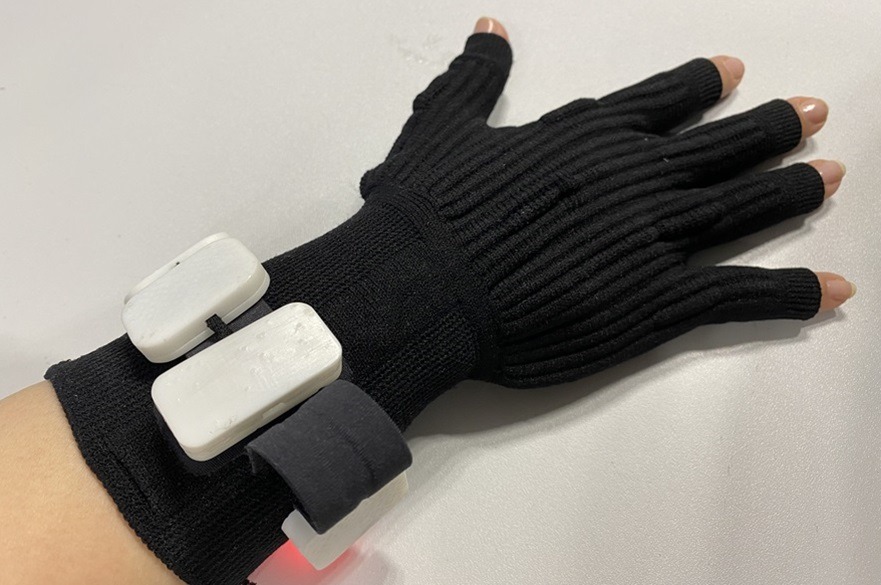By Arduino Team
Part of the reason that we all learned in school about the Helen Keller’s inspiring life was because the combination of blindness and deafness are so challenging. An impairment with just one still leaves the opportunity to communicate using the other. But without either sight or hearing, the challenge increases exponentially and that’s why Anne Sullivan’s communication methods were so groundbreaking. Now, researchers from Nottingham Trent University have automated those methods through a wearable glove they call the “Vibrotac-Glove.”
This device essentially does the same thing that Anne Sullivan did with Helen Keller: it communicates via touch sensations. Specifically, those sensations are vibrations coming from tiny eccentric motors embedded into the “e-yarn” textile of the glove over the fingers. Each motor is a haptic point and the wearer can feel their pulsing. By pulsing those motors in deliberate patterns, the glove can convey information to the wearer.
For this prototype, an Arduino Nano 33 IoT board, housed in an enclosure on top of the glove, controls the haptic motors. The Arduino communicates wirelessly with a smartphone app, which tells it what to communicate.
The app can interpret and “translate” information into a series of haptic pulses with the help of a tailor-made artificial intelligence. It can, for example, listen to someone speaking and then translate that speech into haptic pulses that the wearer is able to sense and understand. It can also do the same thing with onscreen text, phone notifications, fire alarms, doorbells, and more.
According to Sense International, as many as 160 million people worldwide have some form of deafblindness, with 10% of those being severe cases. This glove, which would be quite affordable to manufacture at scale and is also DIY-friendly, could be incredibly beneficial to those people.
The post This haptic glove could help deafblind people communicate appeared first on Arduino Blog.
Read more here:: blog.arduino.cc/feed/





